4 Yoga Poses to Help Ease High Blood Pressure
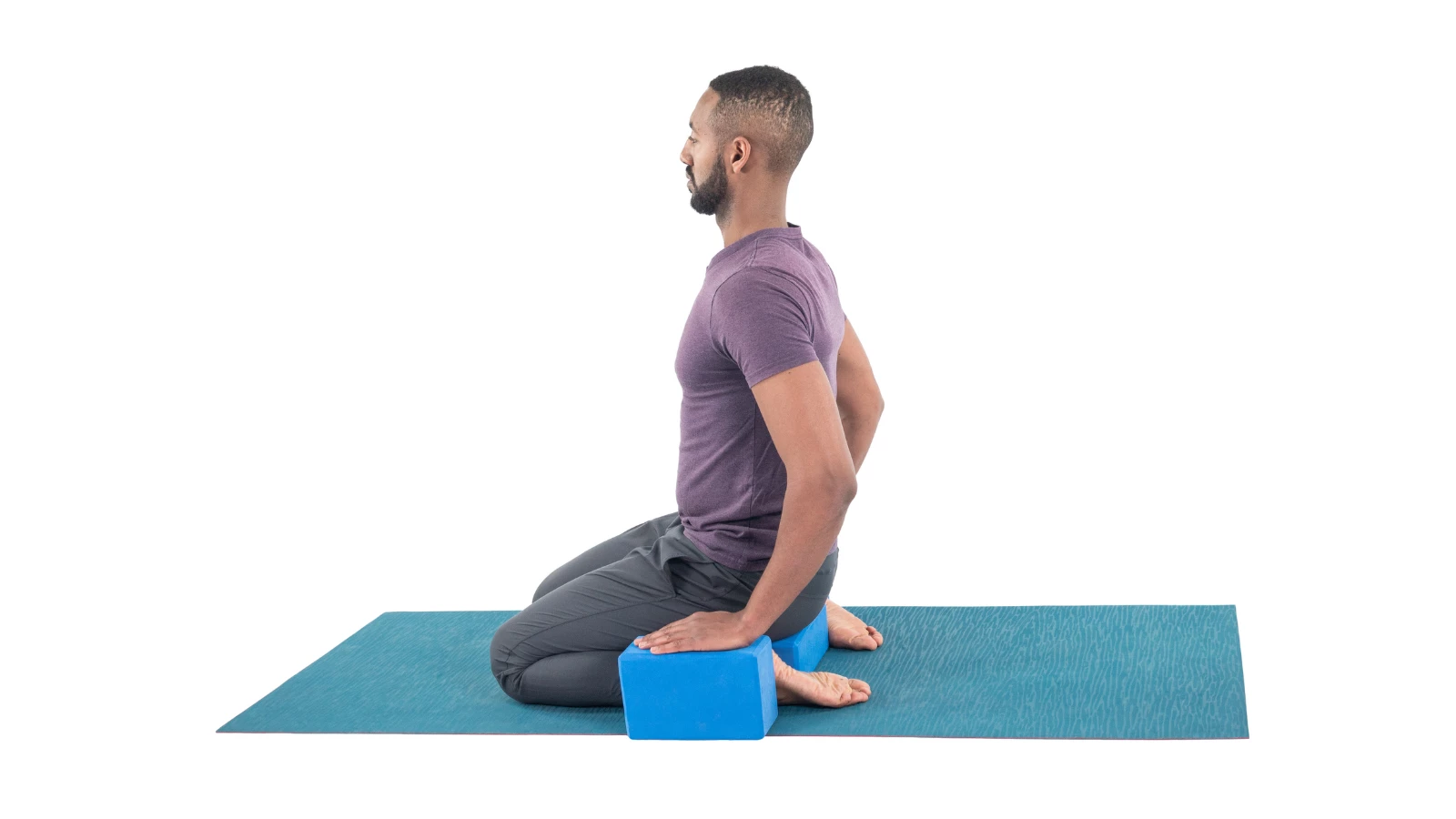
Article At A Glance
Approximately 46 percent of Americans have high blood pressure, based on the American Heart Association’s (AHA) new definition.
High blood pressure can trigger feelings like anxiety. Research shows that anxiety doesn’t seem to cause long-term hypertension. However, studies noted that episodes of anxiety may cause significant short-term spikes in blood pressure. Once instances like this occur, it’s helpful to try natural alternative treatments.
Researchers reported yoga might offer a practical alternative therapy among individuals with prehypertension or hypertension. However, additional controlled trials are warranted to investigate yoga’s potential benefits for improving blood pressure.
Yoga may also provide back pain relief, heart health, and stress management. It can also help relieve sciatica pain. Inflammation, irritation, pinching, or compression of lower-back nerves cause sciatica pain.
Yoga and High Blood Pressure
A review published in Hindawi studied the effectiveness of yoga for hypertension. The meta-analysis examined the effects of yoga on individuals with prehypertension or hypertension.
The studies suggested that yoga produced an overall significant reduction in blood pressure. The researchers reported the reductions demonstrated a “clear clinical significance.”
Yoga Poses to Help Reduce Stress
Cobra Pose (Bhujangasana)
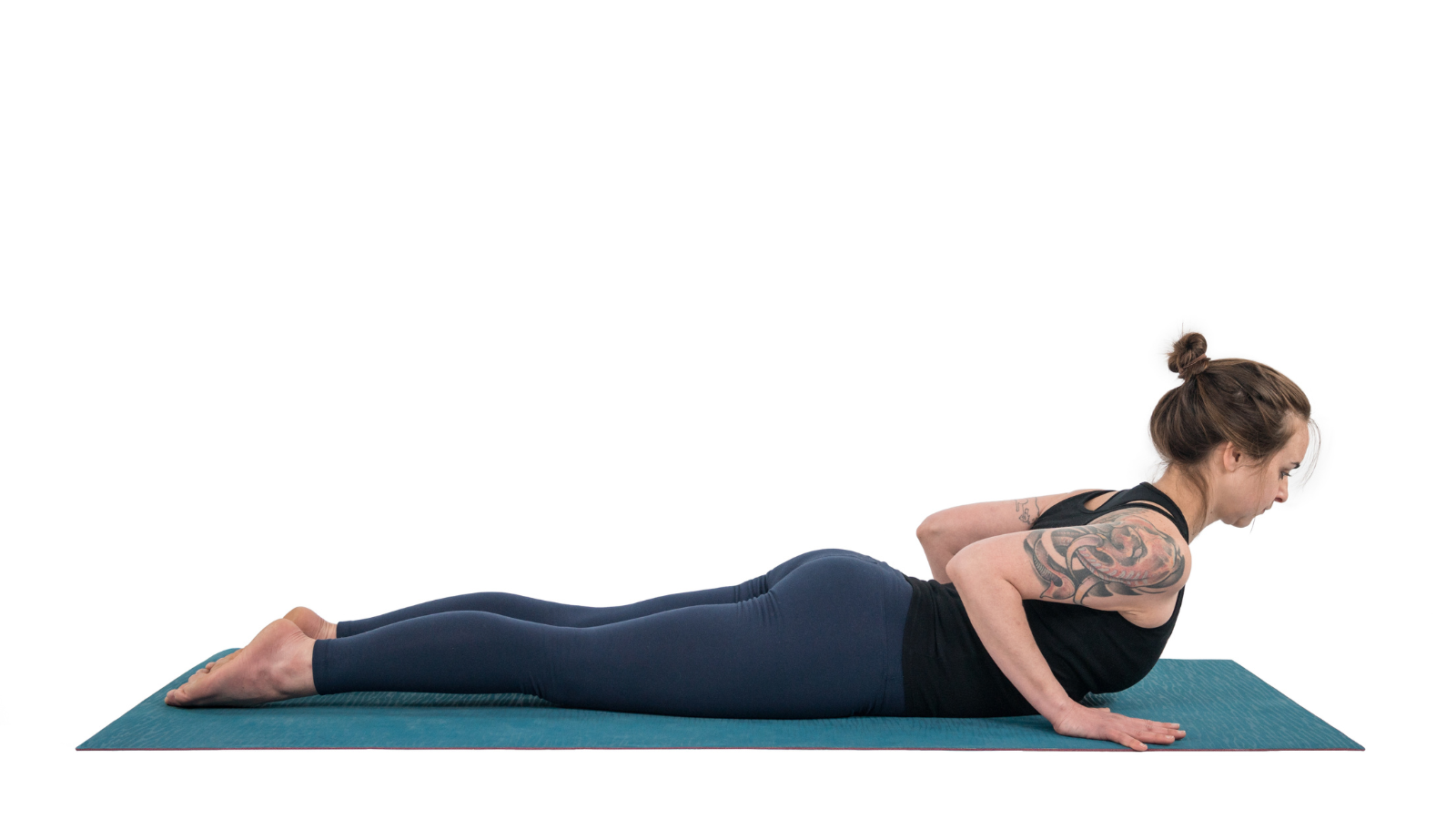
Cobra Pose may help increase blood and oxygen circulation, relieve stress, and promote heart health. This pose may also help improve flexibility and relieve asthma symptoms.
Here are the steps to do the Cobra Pose:
1. Lie face down on the yoga mat, extending your entire body. Press your legs and tops of feet into the mat, bringing the legs to a hips-width distance.
2. Place your hands under the shoulder blades. Bring your face-down hands under the shoulder blades. Prepare to lift your head and upper body.
3. Start lifting the upper body into a “low cobra” position. Avoid putting excess weight into your hands since you want to strengthen the lower back muscles.
4. Use your lower back muscles to lift higher. After stabilizing in the low cobra, press more into the hands. Use your back and stomach muscles to lift as high as you can. Use your nose to breathe comfortably.
5. Keep the shoulder blades back and down while drawing the chest forward.
6. Lower your body gently while exhaling, slowly lowering to the ground.
Happy Baby Pose (Ananda Balasana)
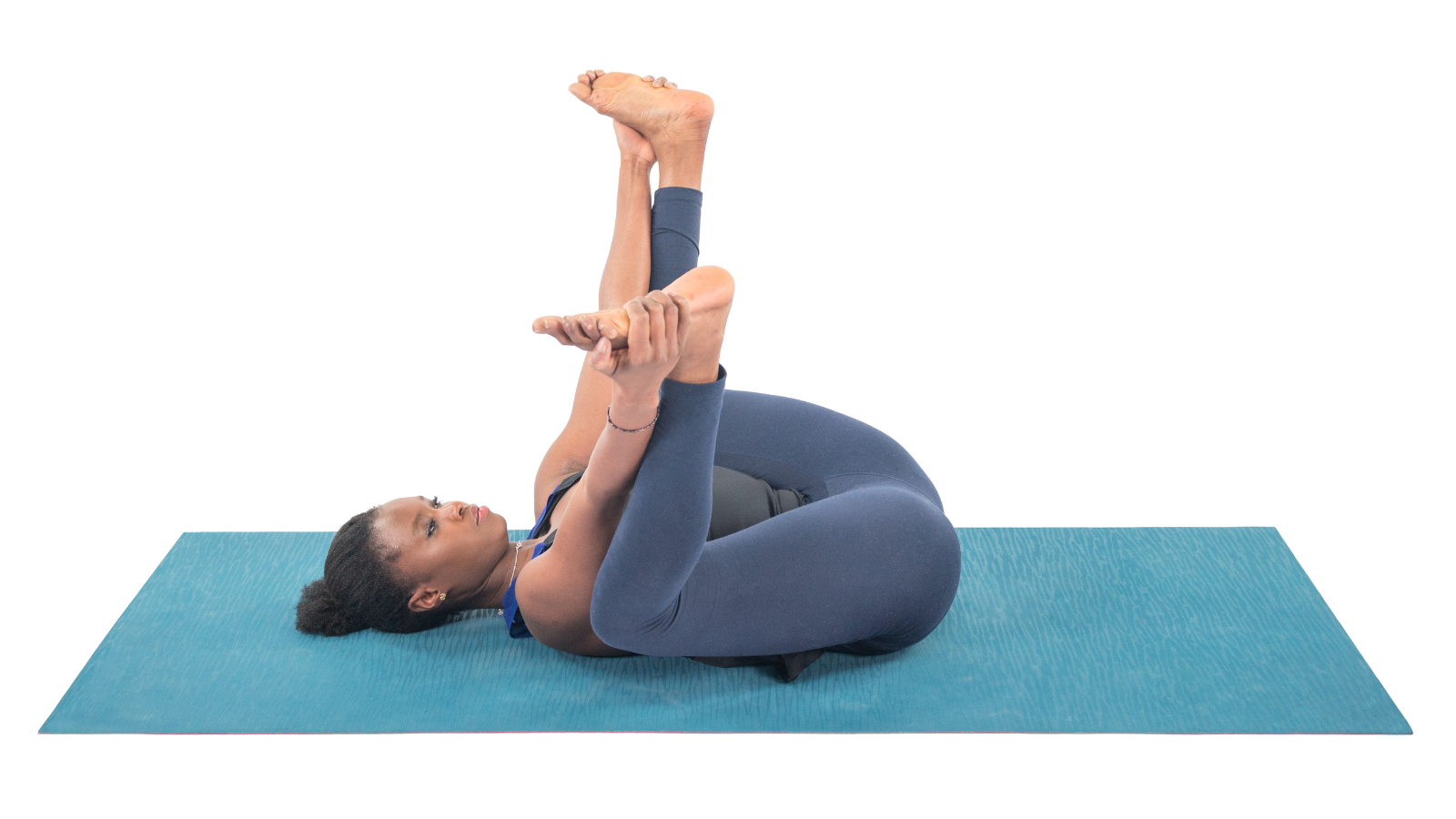
Happy Baby Pose may be beneficial for patients with high blood pressure. It may provide relief from various factors contributing to high blood pressure. This asana may lower stress levels and improve blood circulation.
Using controlled breathing while conducting the asana may promote calmness and lessen neck and shoulder stress.
Here are the steps to do the Happy Baby Pose:
1. Lie on your back. While exhaling, bend your knees into your body.
2. Inhale, then grip the insides of your feet using your hands. Open your two knees slightly wider than the torso. Then bring your knees toward your armpits.
3. Align each ankle directly over your knees, so your shins are perpendicular to the floor. Flex your feet, pushing them up into your hands while pulling the hands down to produce resistance.
4. Take 5 to 10 deep breaths here. Then release the pose and rest with the soles of your feet hips-width apart on the floor and your knees directly above.
Hero’s Pose (Virasana) With Extended Exhalation
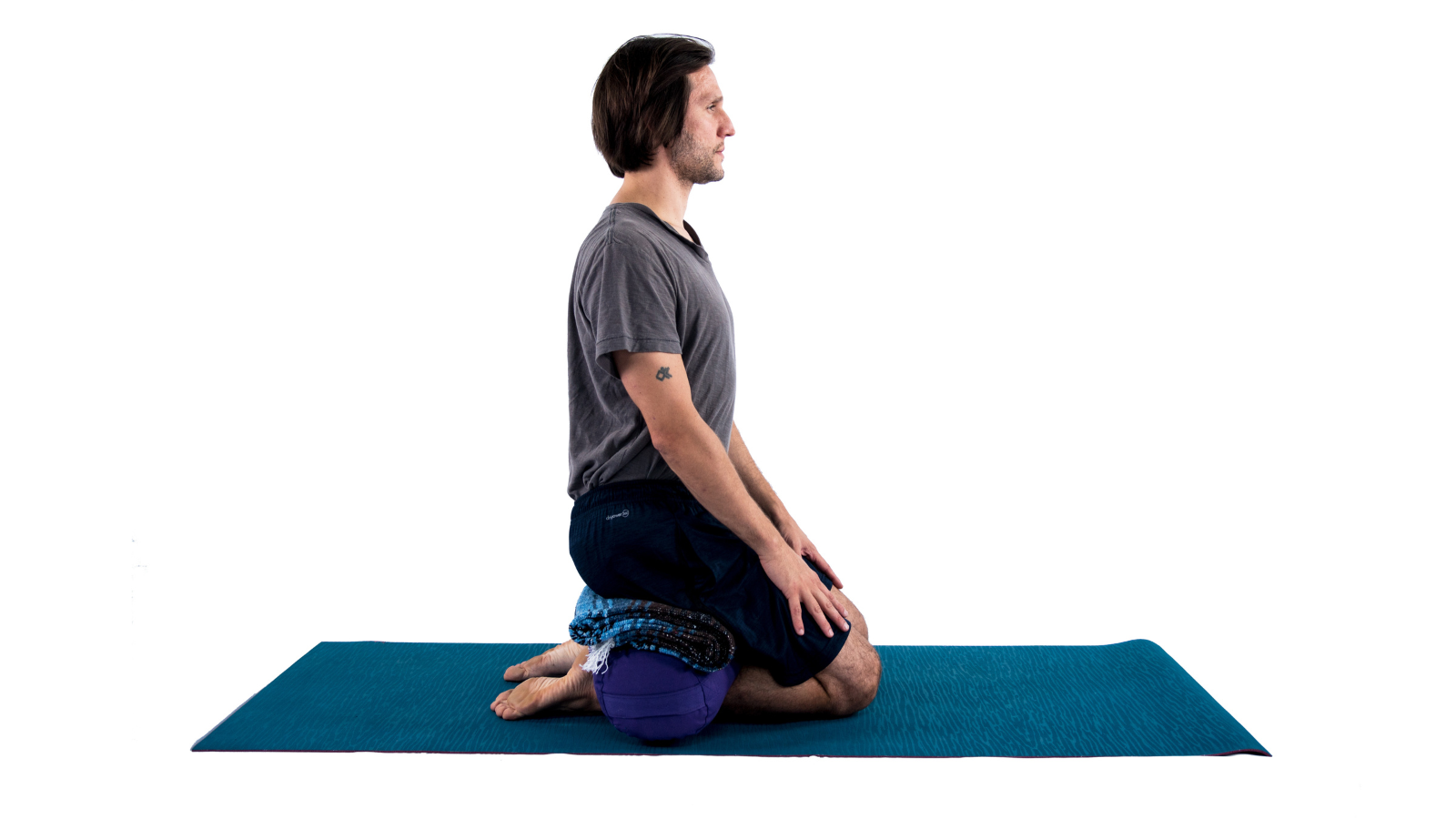
Studies show that yoga practices with breathwork may offer the best benefits for blood pressure. Lengthening the exhalation activates the calming nervous system, possibly relieving stress and reducing blood pressure.
If you feel any discomfort in your knees while practicing this pose, place extra support under your pelvis to reduce knee flexion. If one or both knees feel uncomfortable, no matter how much support you add, avoid practicing this pose entirely.
Here are the steps for this pose:
1. Kneel with hips-width legs and point the tops of your feet behind you. Increase comfort by sitting on a block or folded blanket. You can position the block or folded blanket between your feet.
2. Sit back onto the block. Sit tall, reaching the crown of your head up and lengthening the back of your neck. If your knees are at all uncomfortable, add support under your pelvis.
3. Rest your hands on your thighs and let your eyes close. Focus on your breath and the length of your inhalations and exhalations.
4. Lengthen your exhalation after a few normal breaths. Breathing should remain relaxed and comfortable.
5. Continue the extended-exhalation breathing for as long as comfortable (for example, 3 to 5 minutes). If, at any point, you feel pain or discomfort in your knees, come out of the pose.
6. When you are finished with the pose, return to kneeling. Then stretch your legs out onto the floor in front of you.
Bound Angle Pose (Baddha Konasana)
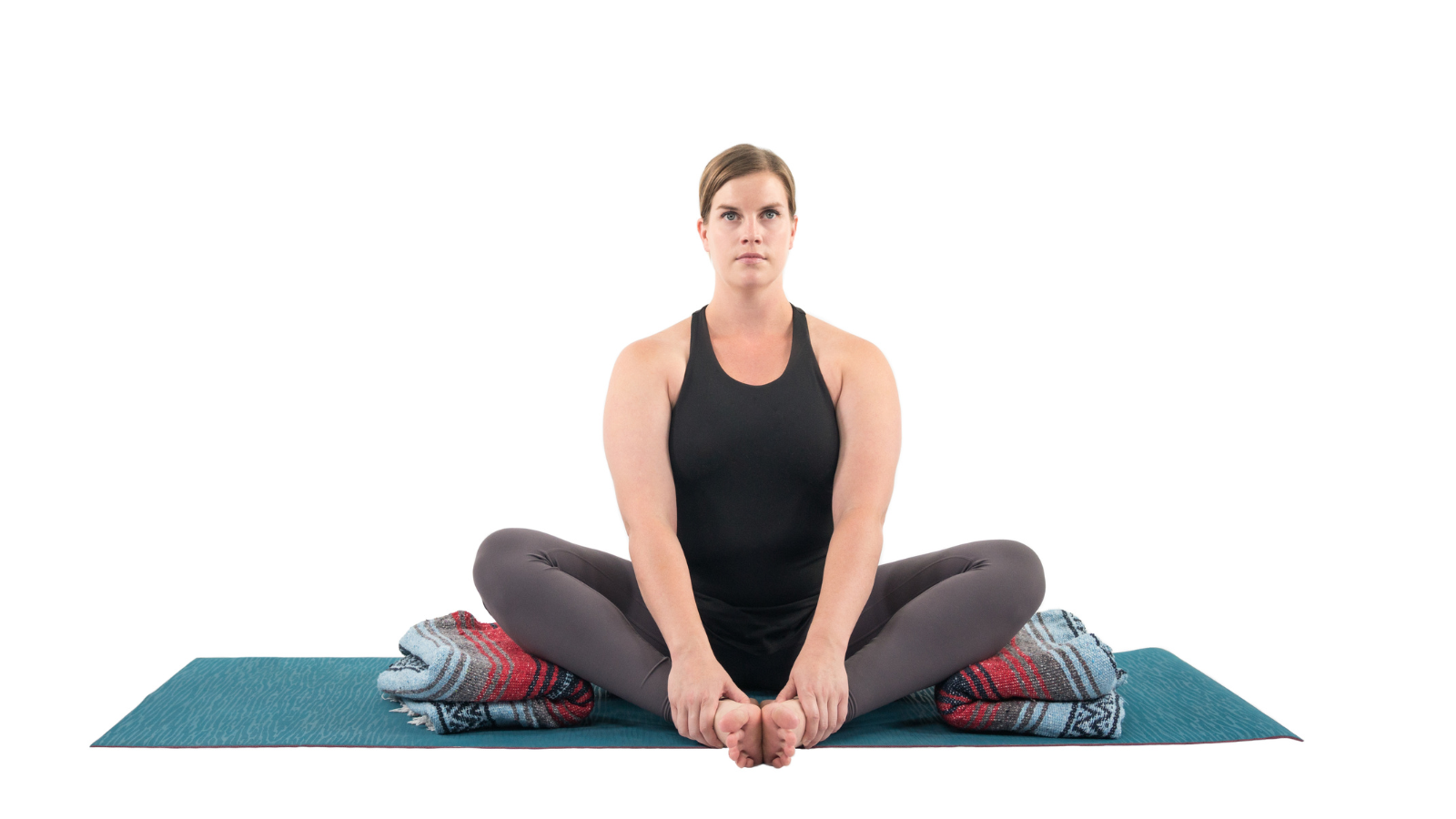
This pose stretches the adductors and may help increase your body’s blood circulation.
Here are the steps:
1. Sit on the ground in Staff Pose (Dandasana) with your legs extended straight out in front of you. Bend your knees and bring your feet’s soles together so your knees fall open to the sides.
2. If you feel your low back is rounding, place extra support under your pelvis, such as a yoga block or folded blanket. Your pelvis should be elevated, and the outsides of your feet should be on the floor.
3. Rest your hands on the floor behind you to support your spine. Another option is to hold your feet gently.
4. While inhaling, lengthen your spine, reaching through the crown of your head. Slide down the shoulder blades and lengthen the back of the neck.
Practice Yoga for High Blood Pressure with Care
Individuals experiencing long-term blood pressure issues should not ignore their health condition. Instead, consulting a doctor is crucial.
Yoga sessions may help improve your overall health and well-being. However, individuals taking medications for high blood pressure should consult their doctors before starting yoga.
Also, read...
4 Yoga Poses to Help Ease High Blood Pressure
Diaphragmatic Breathing for Healthy Aging
5 Reasons Your Immune System Gets Weaker with Age and How Yoga Can Help
Related courses
Stanley Clark is a community development volunteer and writer. He had worked on several commercials, events, and campaigns before writing full-time in the area of natural health and wellness. He writes for sites like CBD Clinicals and Motherhood Community.
References
- More than 100 million Americans have high blood pressure, AHA says https://www.heart.org/en/news/2018/05/01/more-than-100-million-americans-have-high-blood-pressure-aha-says
- 9 Benefits of Yogahttps://www.hopkinsmedicine.org/health/wellness-and-prevention/9-benefits-of-yoga
- Effectiveness of Yoga for Hypertension: Systematic Review and Meta-Analysishttps://www.ncbi.nlm.nih.gov/pmc/articles/PMC3679769/
- Anxiety: A cause of high blood pressure?https://www.mayoclinic.org/diseases-conditions/high-blood-pressure/expertanswers/anxiety/faq-20058549
- Sciaticahttps://my.clevelandclinic.org/health/diseases/12792-sciatica



